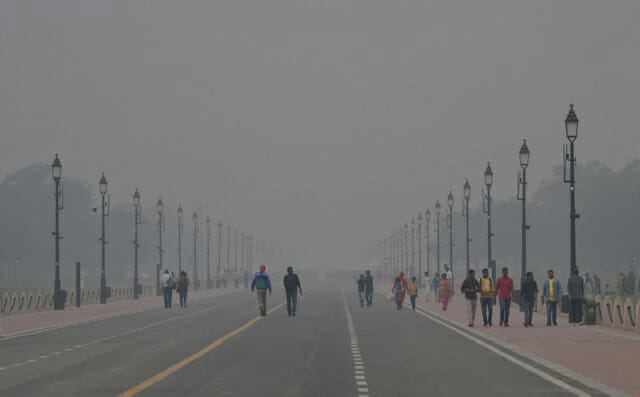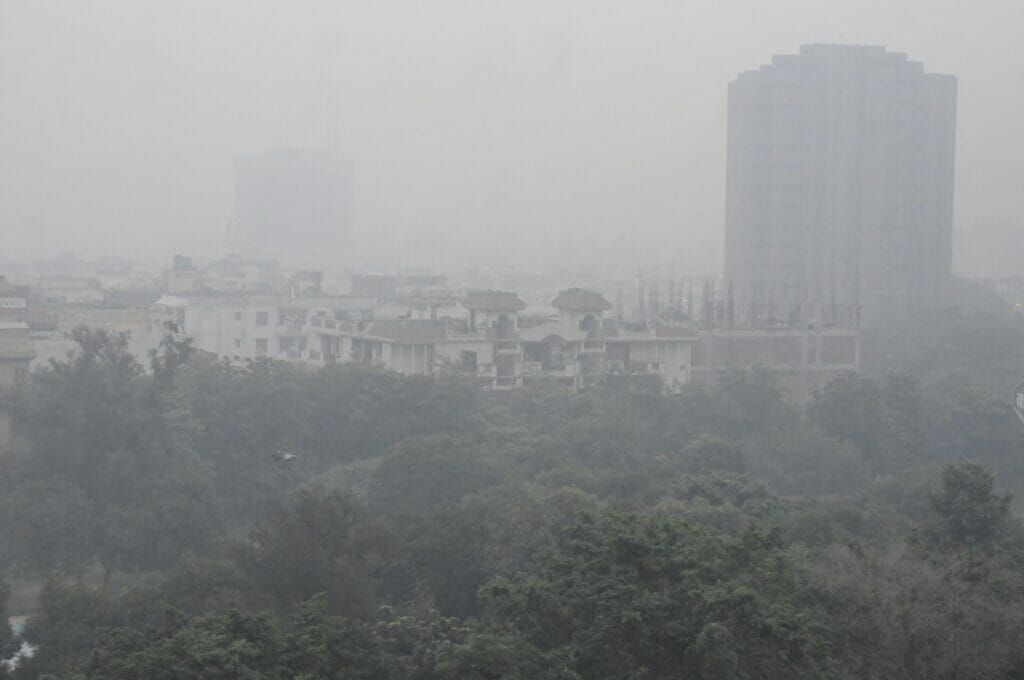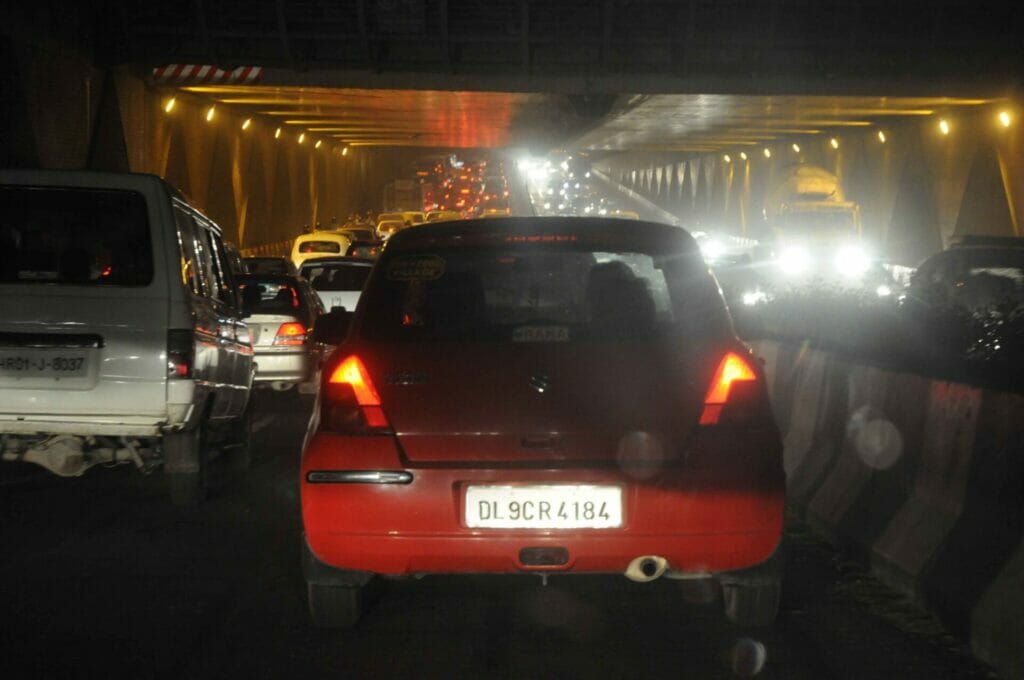It was an encouraging clean air start of October for Delhi. The capital recorded five good AQI days in the first two weeks of October. But the good news ended there. The annual nightmare of poor to severe and very severe air quality in Delhi and adjoining areas soon returned. And with it, the annual nightmare of strict and systematic implementation of the different stages of the revised Graded Response Action Plan (GRAP) by the Commission for Air Quality Management (CAQM) in the NCR which had kicked in from September 11th.
Air quality had continued to deteriorate before and after the dust and pollution on account of the Diwali crackers had settled down. And all the restrictions under the two stages of air pollution were in force by October 29th, when restrictions under Stage 3 were enforced, implying that almost all the toughest measures were in force.
Yet, on November 3rd, before Goldy Malhotra, a former principal of Modern School, Vasant Vihar, drove from her Gurugram residence to her office in Civil Lines, she ensured that her house was “tightly sealed”, because of what she saw outside: virtually zero visibility due to the thick smog that had engulfed the entire area.
Read more: Revised GRAP rules: Ban on diesel gensets hits residents, small industries hard
It was a day when air quality in the NCR turned terrible, making it “extraordinarily difficult to breathe”, as Neha Dayal, an east Delhi student put it.

By mid-day, the CAQM ordered implementation of Stage 4 of GRAP in the area stating that “as per the dynamic model and weather/meteorological forecast, the overall air quality over Delhi is likely to be in “Severe+/Severe” (AQI more than 450) category in the next couple of days”.
As forecast, AQI rose to 472 the very next day. Everyone in the NCR was literally breathing smoke. The Delhi Pollution Control Committee referred to the forecast and invoked Direction No 66, the action plan under Stage 4 of GRAP.
On November 5th morning, the staff at SAFAR (the System of Air Quality and Weather Forecasting and Research) under the Union Ministry of Earth Sciences, were somewhat relieved when AQI dropped to 431, a bit better than 472 of the previous day, but still in the severe category.
No relief from bad air days
But huge variations in AQI were noticed in different areas of the NCR. In NOIDA, the fast developing Uttar Pradesh township beyond south Delhi, AQI was 562. While in the Millennium city of Gurugram, home to most big tech companies, AQI was at 539.
With fears that AQI could touch an unprecedented 700 in the short run, before it begins to ease.
Stage 4 restrictions means all truck traffic into Delhi would be stopped, the only exemption being for trucks carrying essential commodities and providing essential services and CNG trucks. It also meant a ban on using diesel operated medium goods vehicles and heavy goods vehicles, again exempting those carrying essential commodities or providing essential services.
For personal vehicles, it meant a ban of diesel cars in the capital, unless they were BS-VI vehicles or were for essential and emergency services. And all industries, even where PNG infrastructure was not available, had to close down all over the NCR.
The directives also banned all construction and demolition activities including in the generally most exempted public projects like highways, roads, flyovers, bridges, power transmission etc.
State governments in the NCR as well as the Government of Delhi were asked to decide on allowing public, municipal and private offices to work with 50% working from home. They were also asked to “consider additional emergency measures” that included closure of schools, colleges, other educational institutions, non-emergency commercial activities, and the introduction of odd-even scheme for vehicles on the roads.
Band aid measures
Similarly, the Central government was asked to decide on permitting work from home for their offices.
On November 4th, Delhi Chief Minister Arvind Kejriwal announced that his government was “shutting primary schools till things improve”, and will take a decision on introducing odd-even vehicles. Delhi Environment Minister Gopal Rai announced that half the NCT government staff will work from home, and urged employers in the private sector to follow suit.
Effectively, it was almost like the COVID lockdown. With the worst affected being those who were still struggling to recover from the first lockdown. “It has been barely four months since my 6-year-old daughter has actually seen a classroom, classmates and teachers,” said an agitated Delhi resident Radhika Kashyap.. “Now this air pollution closure has interrupted her normal school life. I wish the government would review the holiday time-table so that one vacation is timed with this’ ‘.
But not many private offices and traders were willing to let half the staff work from home. “How can my staff work from home?” asked Manish Rajput who runs a small ‘superstore’ in Vasundhara. He employs three boys who deliver groceries to nearby residences, and one salesman while he manages the billing.
But there are reports that some companies have retained the hybrid mode in anticipation of Delhi turning into a gas chamber and GRAP being strictly enforced.
The rising AQI figures making the air over the capital more and more toxic resulted in the Kejriwal government doing many other things: To reduce the number of cars on the roads, they launched over 500 CNG buses under the “Paryavaran Bus Service” banner. Plans are also underway to stagger market and office timings.

Read more: Five simple steps can improve Delhi air quality, but will citizens and governments cooperate?
By November 5th evening, SAFAR’s website recorded that the overall AQI indicated the “upper end of Very Poor AQI”, attributing 21% of it to stubble burning, but ended on an optimistic note that the AQI was likely to be at the lower end of “Very Poor” or even Poor, on account of a drop in fire counts, unfavourable upper level wind flow, reduction in local emissions and moderate dispersion of pollutants leading to dilution of near surface pollution.
All that was however just wordy mumbo jumbo for the residents of the NCR, for SAFAR also urged people to avoid all outdoor activities and to stay put indoors. The advisory also suggested that asthmatics keep their nebulizers handy, indicating that the air they had to breathe was simply not safe.
A survey by LocalCircles, a social media website connecting people to their communities, governance, city, causes, neighbourhoods, interest, needs etc found that 13% of NCR residents had left town to escape the toxic air, and that the percentage of families with one or more members having pollution related ailments rose from 70 to 80% within five days. About 80% of the families surveyed had someone experiencing pollution related ailments, and18 % of those surveyed had already visited a doctor. The symptoms included cough, congestion, breathlessness, burning eyes and sore throat.
LocalCircles quotes former AIIMS director Randeep Guleria as saying, “You can call air pollution a silent killer”.
If residents of Delhi and the NCR continue to gasp for breath and dream of fresh winter air even after implementing all the action plans under GRAP, virtually bringing life and economic activity to a grinding halt, the CAQM and authorities should really be asking themselves – if all this does not work, what next?
And will the same cycle be repeated next year?

CSE assessment and recommendations
Anumita Roychowdhury, executive director, research and advocacy at The Centre for Science and Environment (CSE) says that Delhi has failed to build transportation strategies to scale, and points to their assessment that vehicles are the top polluters in Delhi during the Diwali week, Oct 21st to 26th.
A city with 1.4 crore vehicles and generating at least 276 lakh travel trips a day does not have scalable transportation yet to reduce traffic volume. What is needed is public transport augmentation and integration, electrification of fleet, walking and cycling infrastructure, low emissions zones, vehilcle restraint measures like parking caps and pricing and transit -oriented development, says the CSE, adding that there is a “lack of sustainable alternatives blocking effective emergency measures to control vehicle usage during the severe smog episodes in winter”.
Even the air emergency measures enforced for the very poor and severe categories of AQI under GRAP do not include action, barring increased parking charges.
Says Roychowdhury, “Even though action on transportation is underway, it is too little too late. Sustained and stringent action is needed for mobility transition.